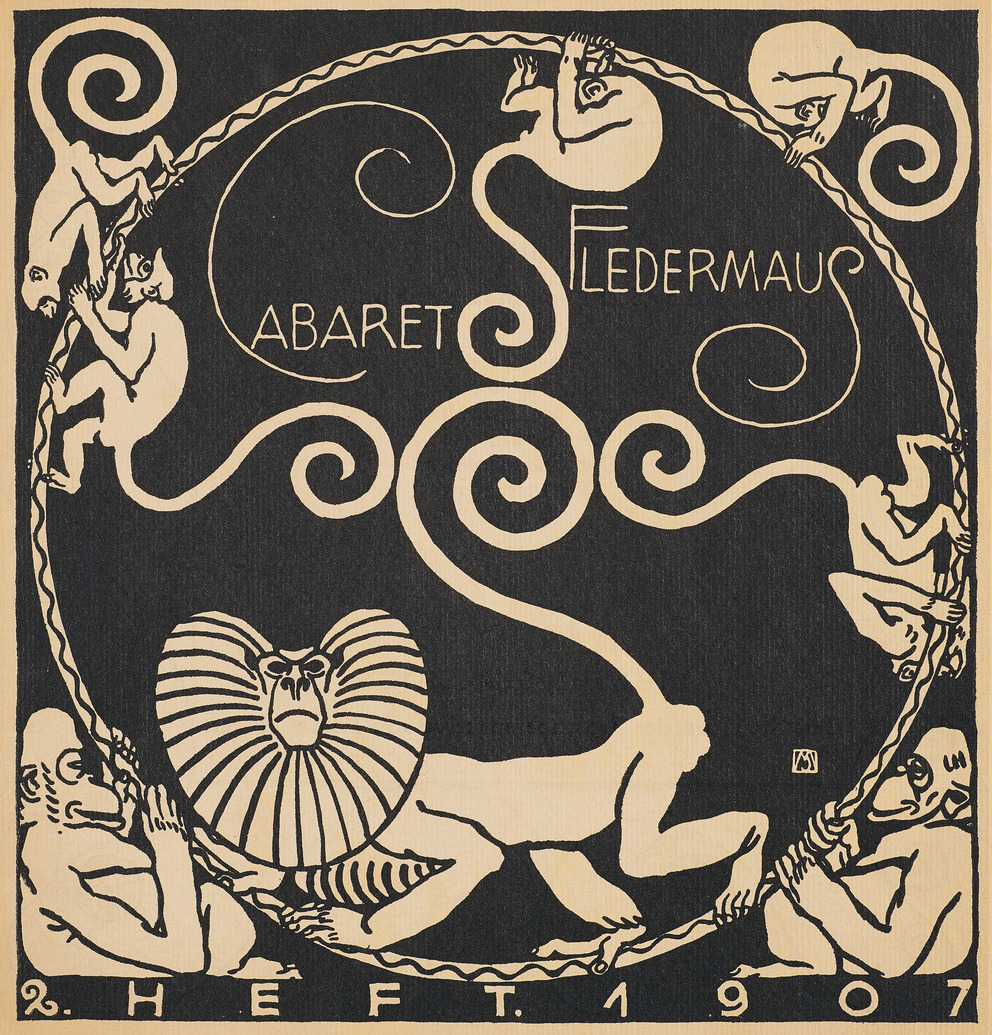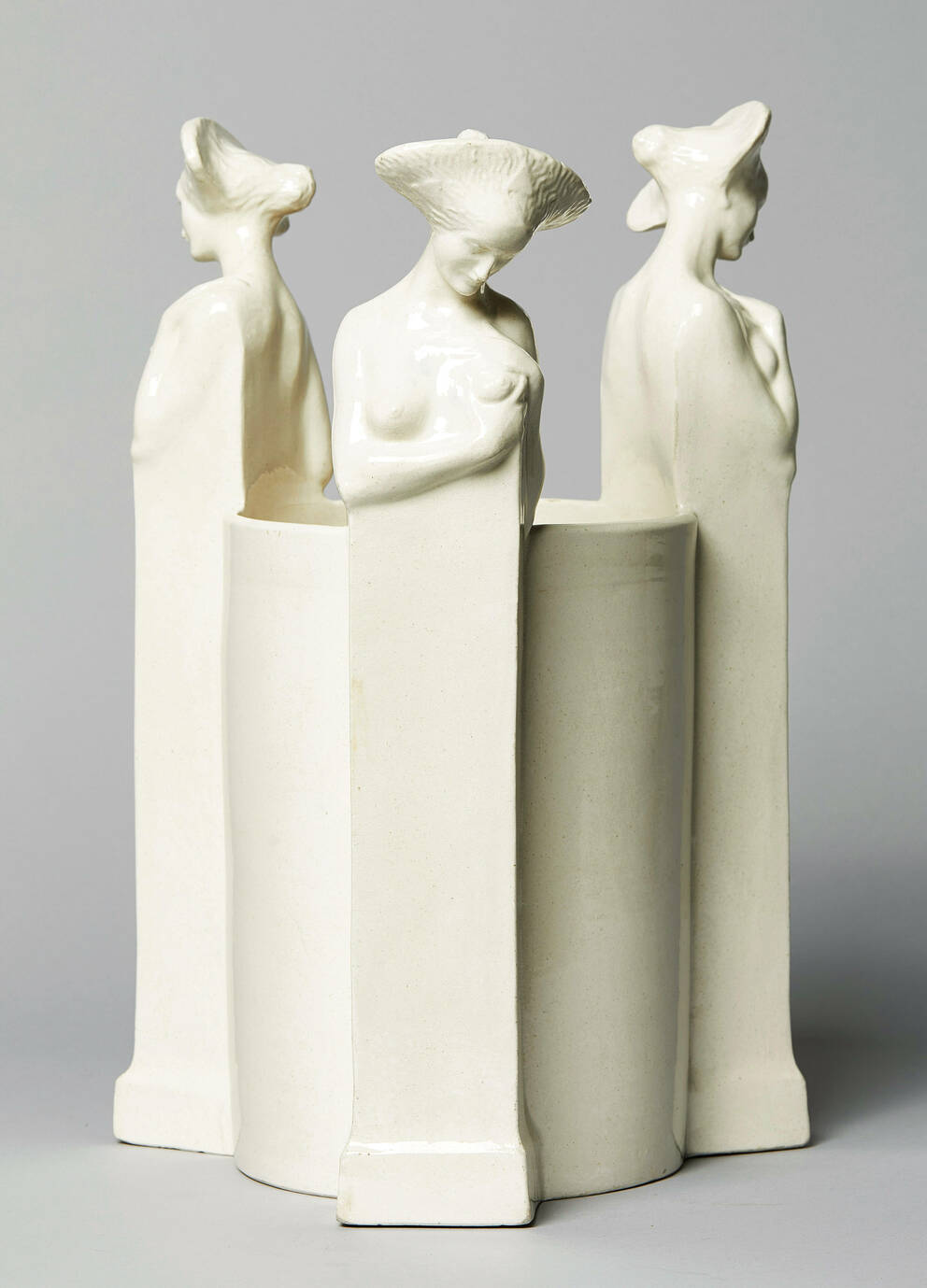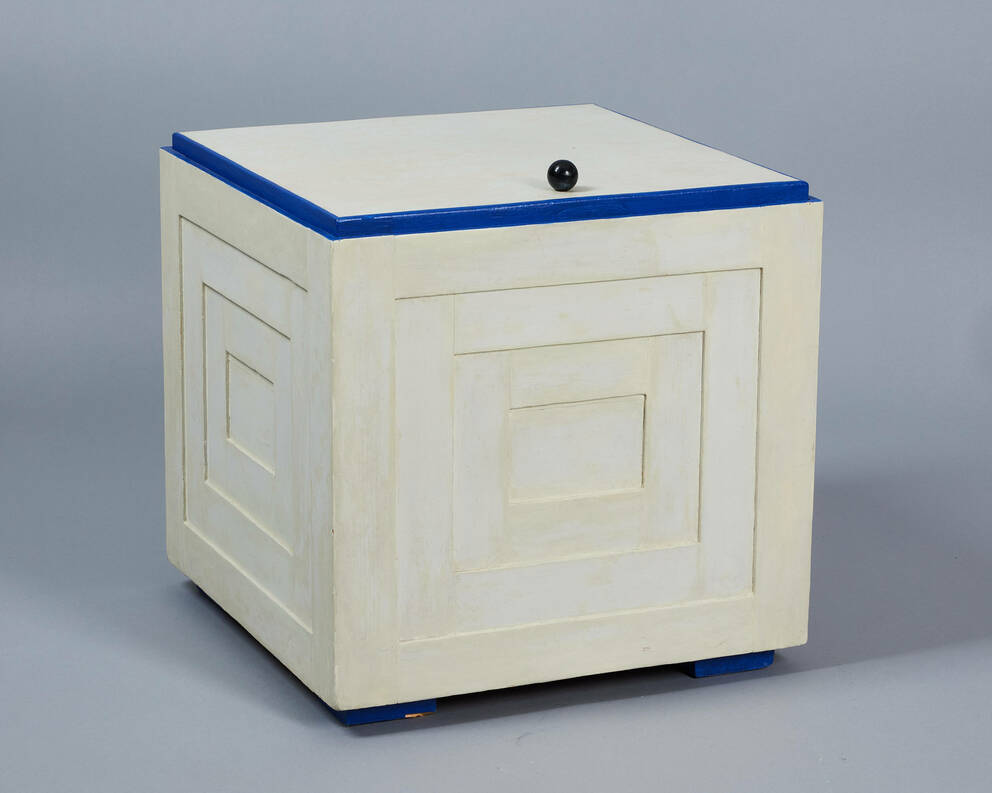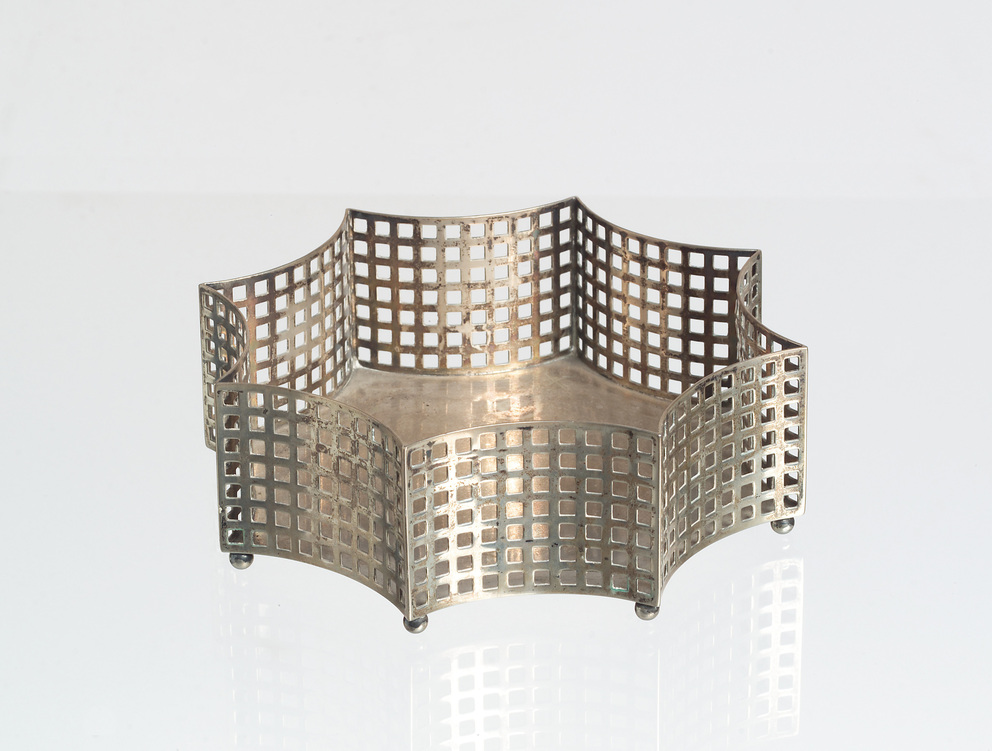Wiener Werkstätte
Design and craftsmanship as a unity
Creating a symbiosis of design and craftsmanship – that was the purpose of the Wiener Werkstätte. When Koloman Moser (1868–1918) and Josef Hoffmann (1870–1956), with the financial support of the textile industrialist Fritz Waerndorfer (1868–1939), laid the foundations for this collective in 1903, they wanted nothing less than to renew the concept of art itself. Inspired by the British Arts and Crafts Movement, the WW’s repertoire included jewelry, clothes, items of furniture, ceramic works as well as postcards and playing cards. The aim was to offer artisan, non-industrial items instead of machine-made mass products. The WW worked closely with the Vienna Secession and with the Vienna School of Arts and Crafts whose students – for instance Oskar Kokoschka (1886–1980) and Rudolf Kalvach (1883–1932) – received commissions from the collective.
Fashion Figurine. From the Portfolio *Vienna Fashion 1914/5*, Page I [Selection from Two Portfolios]
Dressing Table. From the Portfolio *Vienna Fashion 1914/5*, Page XII [Selection from two Portfolios]





